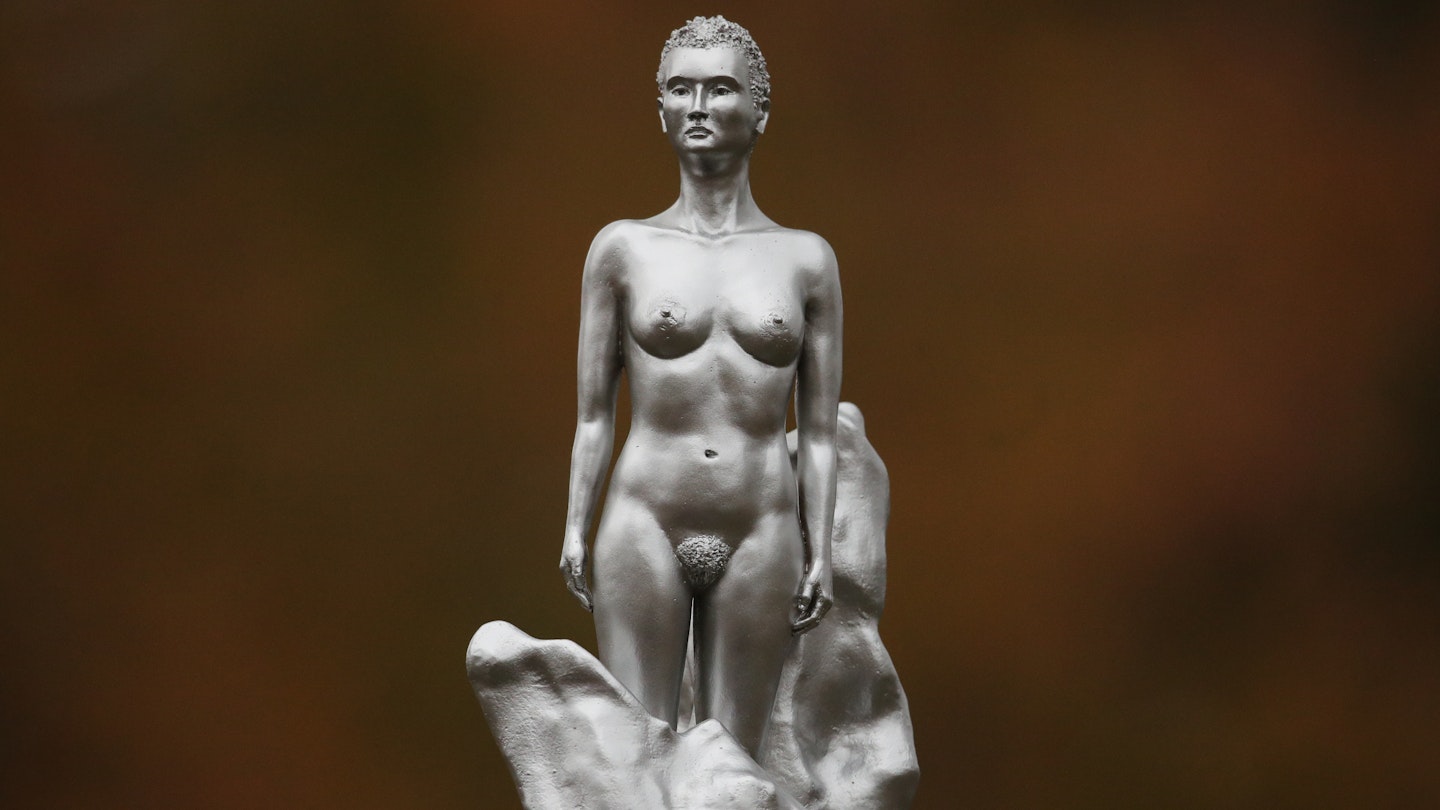A statue honoring the life of 18th-century English writer, philosopher, and feminist Mary Wollstonecraft has been unveiled in London’s Newington Green. However, the sculpture by British artist Maggi Hambling has faced criticism regarding its representation.
Wollstonecraft is the author of the seminal text, A Vindication of the Rights of Woman, and she died in 1797 at the age of 38, just 11 days after giving birth to her second daughter, Mary Shelley, who is famed for writing Frankenstein. The artwork is cast in silvered bronze and features a naked figure held aloft by other female forms, yet it does not directly depict Wollstonecraft herself, which has led to significant criticism. In addition to online discourse, protest banners and messages have been left at the base of the artwork.

The statue is the result of ten years of fundraising by the Mary on the Green campaign, which raised £143,000 ($188,723) for the artwork. This effort arose from the belief that 90% of London’s statues commemorate men, “leaving many incredible women uncelebrated and ignored.” They stated, “Our statues send a powerful message about what matters to us — and implicitly about what doesn’t.” Nonetheless, many people have voiced concerns over the lack of a likeness to Wollstonecraft, arguing that the representation misses the essence of her legacy, instead depicting a naked woman described by the sculptor as ‘everywoman’.
Author Caroline Criado Perez characterized the artwork as “a colossal waste” and expressed disappointment. Similarly, Caitlin Moran shared her thoughts on social media, suggesting that women often prefer statues that portray women realistically, showcasing their power, intellect, and joy.

While many viewed the artwork as a missed opportunity, sculptor Maggi Hambling defended her work in an interview, clarifying that critics had conflated Wollstonecraft with the figure depicted in the sculpture. She explained, “The point is that she has to be naked because clothes define people. We all know that clothes are limiting, and she represents everywoman. As far as I know, she’s more or less the shape we’d all like to be.” Furthermore, she emphasized that the statue’s design aims to transcend historical clothing styles to embody modernity, stating, “Statues in historic costume look like they belong to history because of their clothes. It’s crucial that she is ‘now.’” Thus, the sculpture symbolizes both Wollstonecraft’s legacy and contemporary discourse on women’s representation in society.





